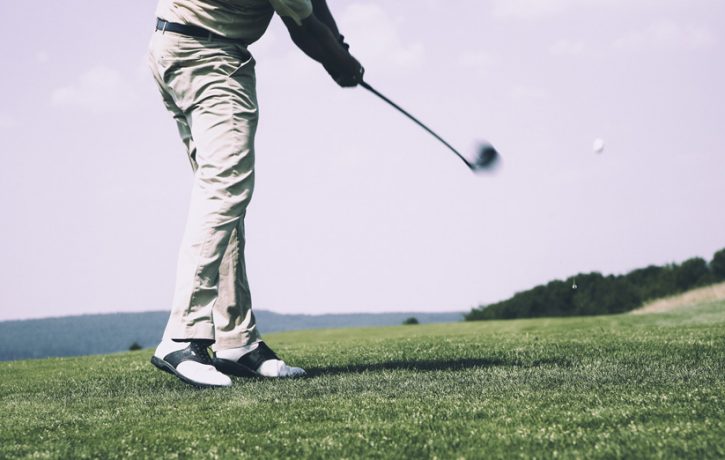in Joints & Muscles, Sports Injury
Golf and Manual Therapy

Because of the repetitive nature of the golf swing, injuries such as muscle pulls and tears or compression injuries can be relatively common. There can also be an accumulation of micro-tears that build into relatively painful conditions.
No matter how often you play, several times a week or once or twice a year, optimal fitness will aid and improve your game and reduce the risk of injury occurring. Proper physical function will allow for better ball contact and less ground reaction forces through the arms and shoulders and ultimately your spine.
Lots of golfers continue to play through pain and as such do their body and their golf game no favours. This leads to frustration with a poor round and compounds the injury that is aggravated and thus affects the overall enjoyment of the game.
Poor bio-mechanics and motor control can contribute to swing faults that lead to inconsistency in their game. Not addressing these issues may lead to a related injury or aggravation of pre-existing problems.
No single muscle works in isolation when we look at functional movement patterns. When we move, there is a programmed pattern of reciprocal muscle activation that is initiated. The brain has the ability to select which muscle groups to activate to create a specific movement. The movement is in our conscious control but how we achieve that is unconscious. The brain has a programmed set of integrated muscle patterns to achieve the required movement.
For example, touch your nose with the forefinger of your right hand. A fairly simple set of muscle contractions through the shoulder, arm and forearm that achieve a specific goal.
In the case of a golf swing, which is complete body pattern, there are more complicated muscle activation patterns and joint movements required to complete this task and the brain can struggle to coordinate all of this in unison and thus the whole pattern can become dysfunctional.
In many individuals there are inefficient motor patterns that can, over time lead to problems and even pain. I often see patients in clinic that cannot initiate a movement in a specific way that seems to demonstrate a lack of co-ordination, but I look at it as the inability of the brain to activate the correct motor pattern. On identification, I can address the issue and look to develop training exercises to reverse the dysfunction.
Seeking the help of the right therapist will help reduce current pain from injury, correct bio-mechanical and motor factors and reduce the risk of further injury, improving consistency by creating a specific treatment and exercise plan targeting weaknesses.
If you take your golf game seriously and are spending money on coaching and struggling to take the swing changes on to the golf course, then you may find it beneficial to have your motor control evaluated and a treatment plan developed to help maximise your swing speed and efficiency and eliminate any physical limitations.
But overall, be sure to take any symptoms seriously and contact the clinic at the first sign of injury to have the issues assessed to avoid time lost on the course while the weather is good.
This article was written by Matthew Oliver M.OST DO ND. OSTEOPATH.
For more information on manual therapy, or to book an appointment with an expert, please call The Body Matters on 01702 714968.
- How to See Life from Another Person’s Point of View - 22nd April 2024
- Using Self-Talk to Boost Self-Confidence - 5th April 2024
- Simple Techniques for Recharging Amid a Hectic Schedule - 28th March 2024
